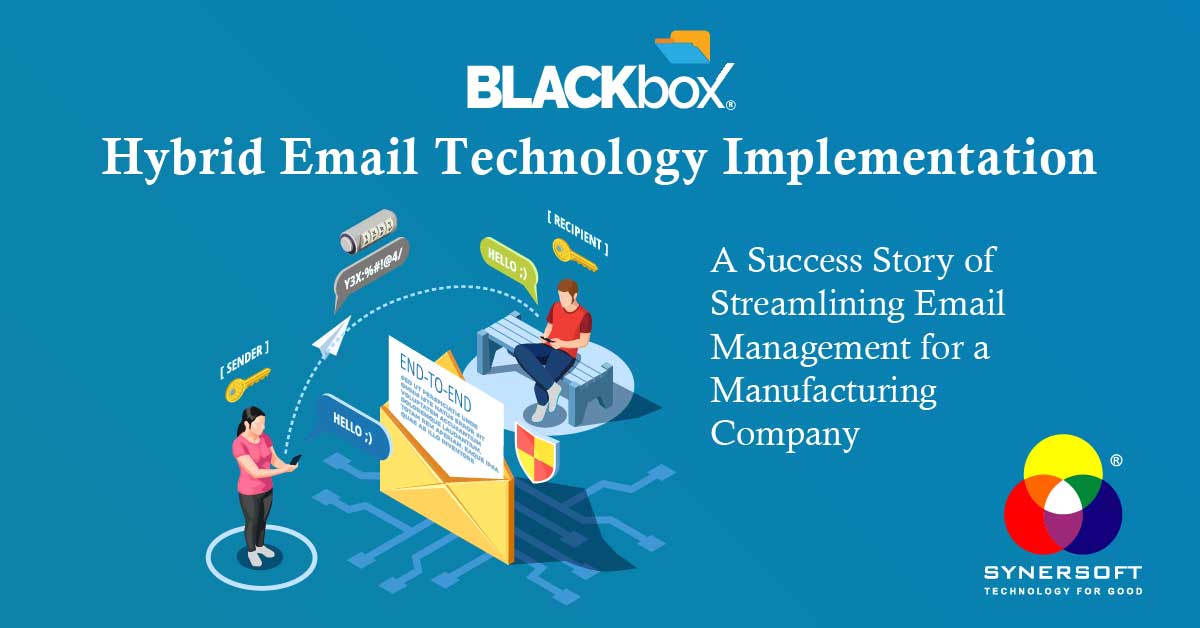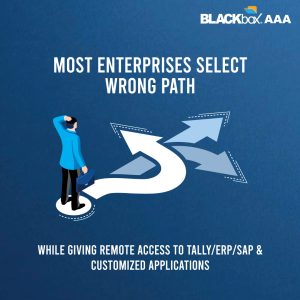Background :
This case study is about a manufacturing company with 200 users. They are using Google Workspace for all the users with a subscription to Basic Plan (30 GB mailbox) of Google Workspace, costing them approximately 2,500 INR per email id per year, i.e. 5,00,000 INR per year. Over the usage of a few years, majority of their users exhausted 30 GB storage. They explored upgrading to the next plan of Google Workspace, i.e. Business Standard plan. They realized that the next available plan would cost them 11,000 INR per email id per year, i.e. 22,00,000 INR per year.
- Out of 200 users, only 20 users (top management team) required Google Workspace Services with a larger mailbox, Google Mail Browser Interface and many other features offered by Google Workspace.
- Out of 200 users, 180 users were primarily using Google Workspace only for emails. Most of them were using emails on their desktop or company given laptop in email clients like Outlook or Thunderbird.
- The explored the possibility of having those 20 users on Google Workspace and rest of the users on an alternative email system. They were informed that if they want to have different email hosts for different group of users, they need to maintain two domain identities.
Alternative Solution: Hybrid Email Technology:
Hybrid Email Systems are rapidly gaining traction due to their impressive flexibility and cost-effectiveness. They enable organizations to use premium services such as Google Workspace and Microsoft 365 for select users while offering a more economical email solution for the rest, all while preserving the same domain identity. Recent developments in Hybrid Email Systems have even exceeded the capabilities of Google Workspace and Microsoft 365 in certain areas. Below, are the questions by the customer and work around that helped them make the most of a Hybrid Email System.
- What if All Users required to Access Google Drive or OneDrive with a Hybrid Email System?
Migrating the majority of the users to a Hybrid Email System from Google Workspace or Microsoft 365 means that Google Drive or OneDrive will only be available to those users for whom the enterprise has provided Google Workspace or MS 365 accounts. This limitation was found challenging by the customer if the users rely heavily on these tools for data sharing and collaboration.
To address this issue, they were advised to consider having users create free @gmail.com or @outlook.com accounts. By doing so, they could continue to access Google Drive or OneDrive without disrupting their workflow. This approach not only maintained the functionality that users were accustomed to but also helped the enterprise save significantly on licensing costs associated with Google Workspace or Microsoft 365. This strategy allowed for a smooth transition while keeping users productive and aligned with their existing data-sharing practices. - What if the Users required to Access Their Emails from Browsers and Mobile Devices with a Hybrid Email System?
After migrating most users to a Hybrid Email System, web-based access to Google Workspace or Microsoft 365 accounts was available only to those who still use these premium services. For users who have migrated to the Hybrid Email System, accessing emails via web browsers or mobile devices required a different approach.
Fortunately, the Hybrid Email System typically offered a webmail feature that enabled users to access their emails through a browser. Additionally, users could configure their email accounts on mobile devices using the IMAP protocol, which allowed synchronization between webmail, mobile devices, and email clients like Outlook or Thunderbird. This ensured that users could stay connected and managed their emails efficiently, whether they were working from a computer, mobile device, or web browser. Implementing this setup facilitates a seamless transition and ensured that users remained productive across different platforms. - What if All Users required to Access Calendar Applications with a Hybrid Email System?
With most users migrated to a Hybrid Email System, Google Calendar or Outlook Calendar was accessible only to those for whom the enterprise has provided Google Workspace or MS 365 accounts. This can posed a challenge if calendar functionalities are integral to your team’s scheduling and coordination.
To provide calendar access for users in the Hybrid Email System, they could use the calendar application integrated into the webmail service of the Hybrid Email System. The Hybrid Email Systems is equipped with robust calendar features that offer similar functionalities to Google Calendar or Outlook Calendar. Additionally, users could utilize calendar applications available in email clients like Outlook or Thunderbird. This solution ensured that calendar functions are available to all users, regardless of their email system, and supported a smooth transition while maintaining effective scheduling and planning. - What if the Users required to Continue Using MS Teams or Google Meet with a Hybrid Email System?
As they migrated the majority of users to a Hybrid Email System, MS Teams or Google Meet were only be accessible to those for whom the enterprise has provided Google Workspace or MS 365 accounts. Collaboration tools like MS Teams and Google Meet were often essential for virtual meetings and team collaboration.
To enable continued use of these collaboration tools, the customer considered having users create free @gmail.com or @outlook.com accounts. This way, they could continue using Google Meet or MS Teams without interruption. This approach ensured that the team could maintain their preferred collaboration methods while benefiting from the cost savings of the Hybrid Email System. By integrating these free accounts into their workflow, they could balance the advantages of both the premium and cost-effective solutions.
Post-migration, Google Docs or MS Office was availabl - What if the Users required to Access Google Docs or MS Office with a Hybrid Email System?e only to those users for whom the enterprise has provided Google Workspace or MS 365 accounts. Google Docs and MS Office are crucial for document creation and editing, so it’s important to ensure that all users can access these tools if needed.
To continue using these productivity tools, users had set up free @gmail.com or @outlook.com accounts. This setup allows them to access Google Docs or the web version of MS Office without affecting their email system. By adopting this approach, users could seamlessly transition to the Hybrid Email System while retaining access to essential productivity tools, leading to significant cost savings for the enterprise.
In conclusion, a Hybrid Email System offered substantial benefits by combining the flexibility of premium services with the cost savings of more economical solutions. By addressing these considerations, the customer effectively implemented a Hybrid Email System that met its organization’s needs, ensured user productivity, and maximized cost efficiency.





